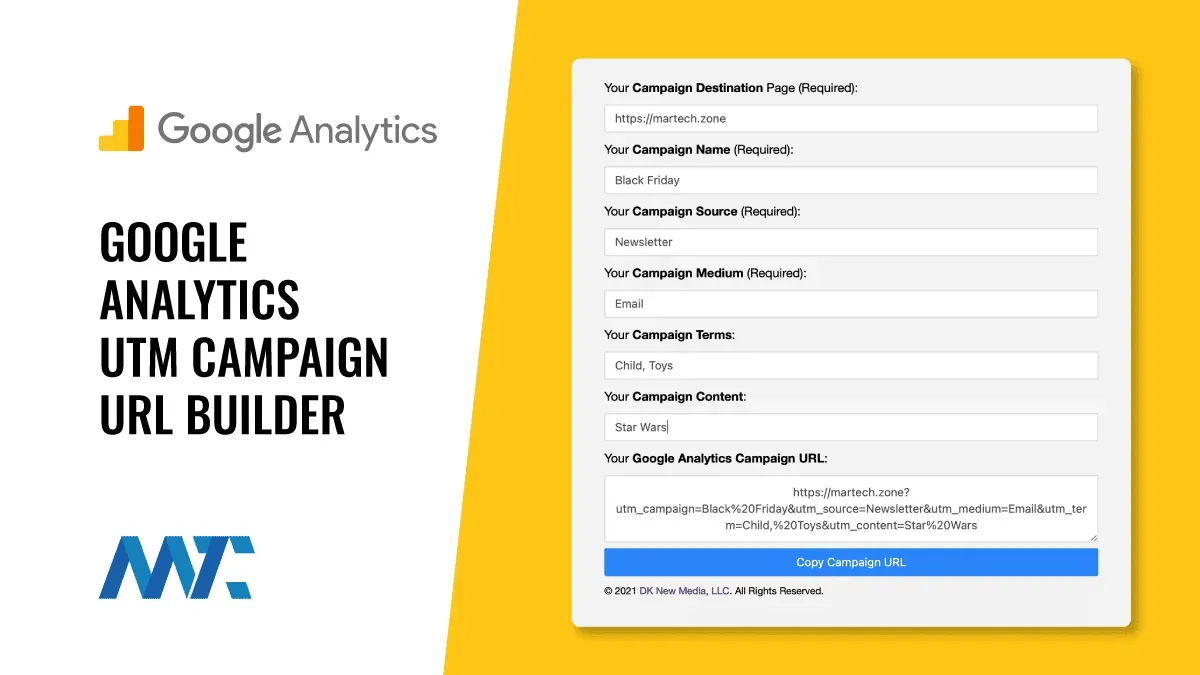Utilize this tool to build your Google Analytics Campaign URL. The form validates your URL, includes logic on whether it already has a querystring within it, and adds all of the appropriate UTM variables: utm_id, utm_campaign, utm_source, utm_medium, and optional utm_term and utm_content.
What Are The Campaign (UTM) Variables Passed To Google Analytics?
UTM variables are parameters you can add to a URL to track the performance of campaigns in Google Analytics. Here is a list of the UTM variables and explanations for campaign URLs in Google Analytics:
- utm_id: An optional parameter to identify which campaign this referral references.
- utm_source: A required parameter that identifies the source of traffic, such as a search engine (e.g. Google), a website (e.g. Forbes), or a newsletter (e.g. Mailchimp).
- utm_medium: A required parameter that identifies the medium of the campaign, such as organic search, paid search, email, or social media.
- utm_campaign: An optional but highly recommended parameter that identifies the campaign or specific promotion being tracked, such as a product launch or a sale.
- utm_term: An optional parameter that identifies the keyword or phrase that led to the visit, such as the search query used on a search engine.
- utm_content: An optional parameter to differentiate between versions of the same ad or link, such as two different versions of a banner ad.
To use UTM variables, you will need to append them to the end of your URL as query parameters. For example:
https://www.example.com?utm_id=123&utm_source=google&utm_medium=cpc&utm_campaign=product_launch&utm_term=running_shoes&utm_content=banner_ad_1How to Collect and Track Campaign Data in Google Analytics
Here’s a thorough video on planning and executing your campaigns using Google Analytics.
Where Are My Google Analytics Campaign Reports In Google Analytics 4?
If you navigate to Reports > Acquisition > Traffic Acquisition, you can update the report to display campaign, source, and medium utilizing the dropdown and the + sign to add a secondary dimension to the reports.
Google Sheet For Tracking UTM Campaign URLs
Be sure to check out the Google Sheet that we built (and you can copy to your own Google Workspace) that enables standardization and recording of all your Google UTM Campaign URLs.
How To Track UTM Campaign URLs in Google Sheets
